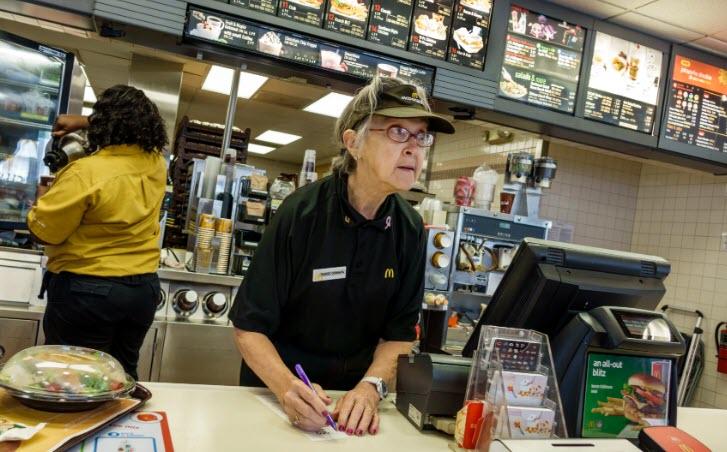“The Magic Is Gone” – Retirement Will Be Different Going Forward
Authored by Bob Williams via Alhambra Investments,
I’m a Baby Boomer – in the middle of the Boomer pack. Talk to almost anyone of my generation and they’ll tell you stories of what retirement looked like for workers when we were growing up. Back then it was common for someone to work for only one company, starting at age 18 and retiring at 65. You took your pension and gold watch and went home to sit on the porch in a rocking chair. Ah, the good ‘ole days!
But those times are long gone and the magical retirement age of 65 isn’t so magical anymore. The workforce is getting more gray hair as Americans continue working into their late 60’s and on into their 70’s.
Social Security hasn’t considered 65 as full retirement age for a long time. The last workers who received full Social Security benefits at that age were born in 1937. For people born in 1938 and beyond, full retirement age has been increasing by 2 months per year up to those born in 1960 and after, when full retirement age caps at 67.
According to the Bureau of Labor Statistics, in 2016, almost 27% of Americans between 65 and 74 were still working. That’s projected to exceed 30% by 2026. And the number of people 75 and older who continue to work has gone from 6.4% in 2006 to 8.4% in 2016, projected to hit almost 11% by 2026.
Why is it happening? Some people continue working to have something to do. I’ve talked to people still in the workforce, and some who retired and went back to work. They say, “There’s only so much golf you can plan and so many fish you can catch.” They were bored. They needed something to do.
Some continue to work so they’ll have health insurance.
But the majority of people still working are doing it because they have to. The Government Accountability Office (GAO) reports that almost 29% of households age 55 and older don’t have anything saved for retirement and they don’t have a pension. The National Institute on Retirement Security calculated the number. That means 40 million U.S. households have no retirement savings at all.
The Employee Research Institute estimates that all households with a head of household between 25 and 64 years old, cumulative, are $4.3 trillion short of what they need for retirement.
Among households that do have retirement accounts, The Federal Reserve found the median account balance was $60,000. When you consider medical costs for a couple are estimated to be $200,000 during their retirement years—Not Good.
Numbers from the Social Security Administration (SSA) show 50% of retired couples and 70% of unmarried elderly receive 50% of their income from Social Security. Among all Social Security beneficiaries, 21% of married couples and 45% of unmarried persons rely on Social Security for 90% of their income.
There are more reasons for this retirement disaster than Carter has liver pills (Boomers will understand that analogy). The fact is, retirement will be different going forward than it has ever been. Expect to see more “mature” employees in the workforce. And should you find yourself engaged with one of those more “experienced” workers and discover that the process is taking a little more time than you’d like, take a breath and think that one day, you might be on that side of the equation.
Tyler Durden
Tue, 02/18/2020 – 15:00
via ZeroHedge News https://ift.tt/2STZaGG Tyler Durden
